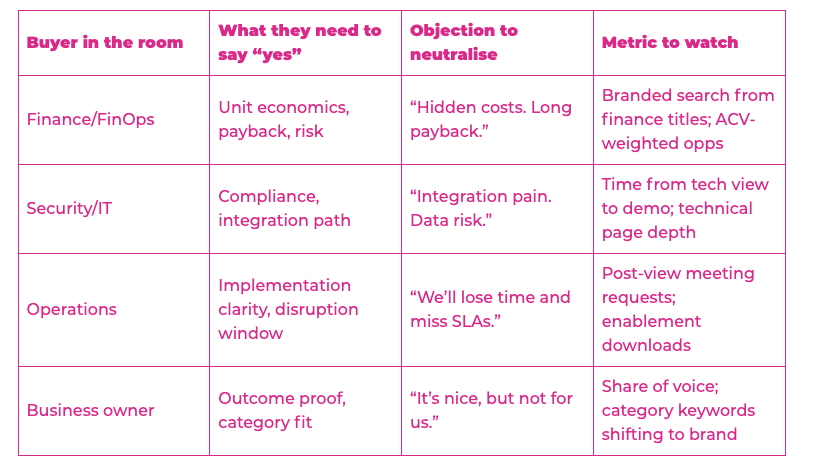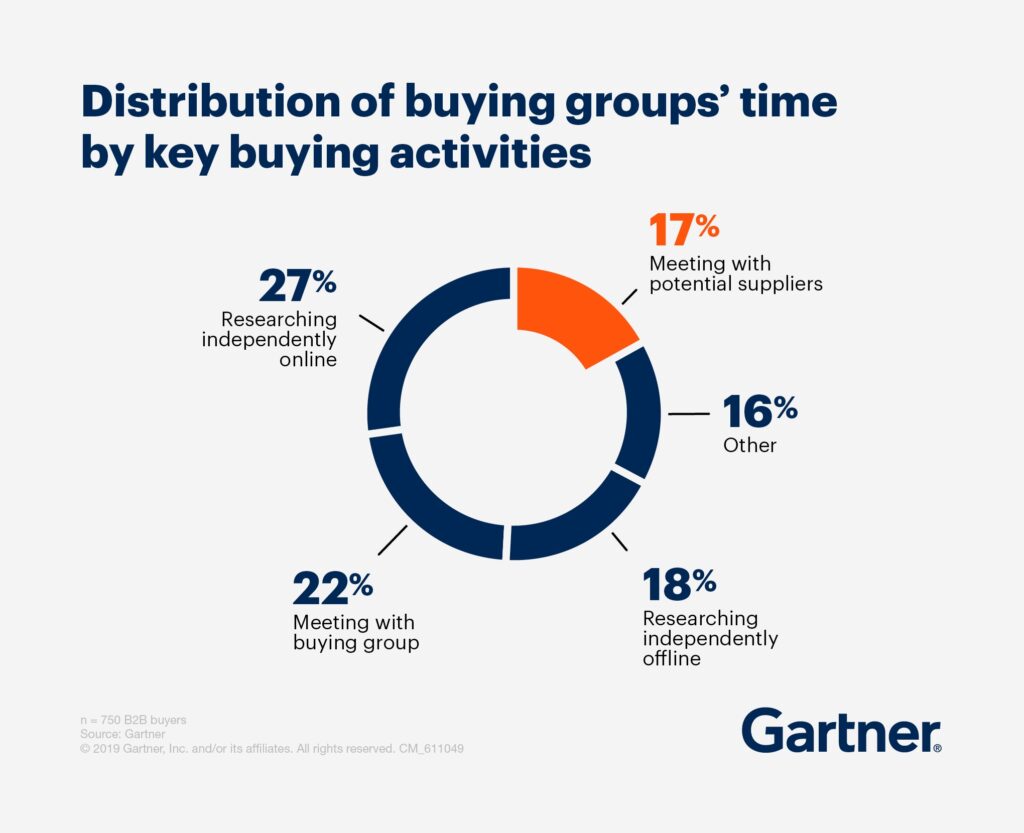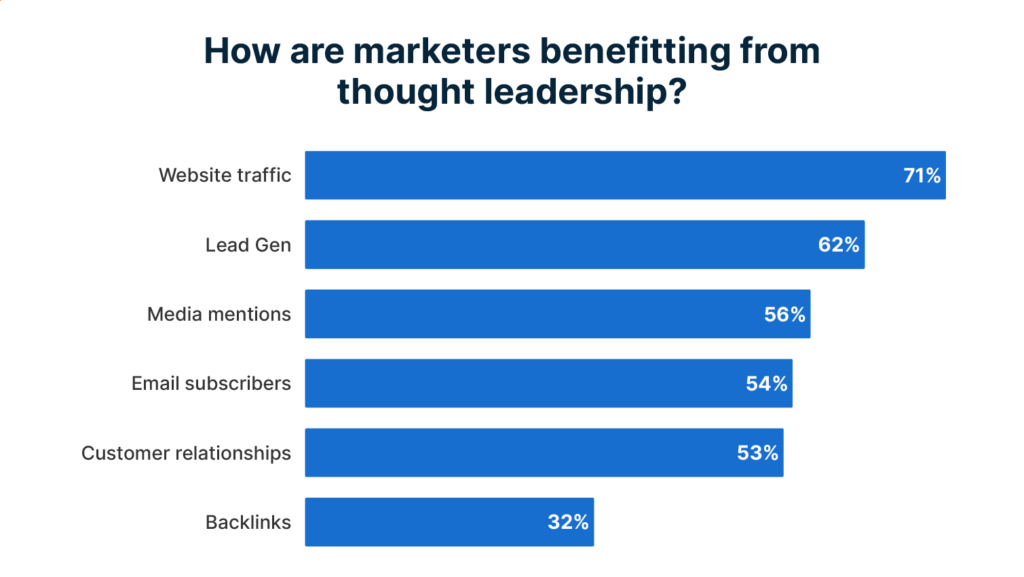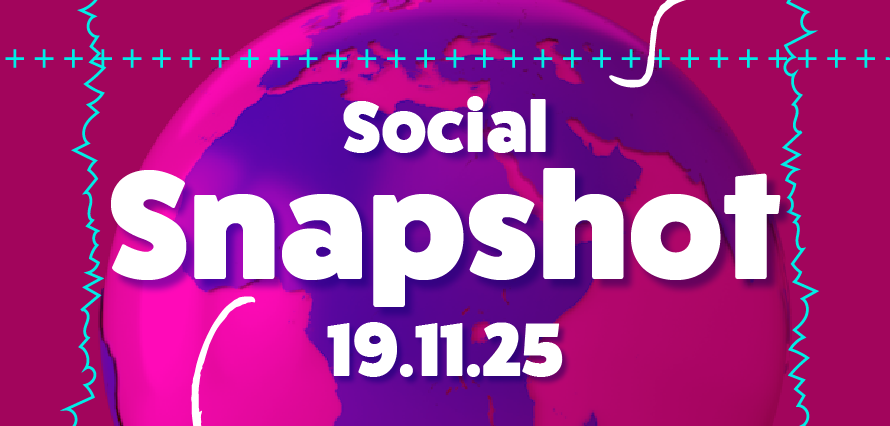November 19, 2025
Buyers decide early. Your funnel is late.
Social Day B2B this year made it crystal clear the rulebook has changed for marketers under pressure to prove growth from social. Session after session, the same message landed from different angles. The funnel you have in your deck is not how buying works any more. The shortlist is being written long before your forms, your nurture emails, your “MQLs”.
Huge credit to Luan Wise and Andy Lambert for curating a day that actually reflected what we see on the ground with clients. Messy buying rooms. Hidden buyers. Social and communities doing the real work. Thought leadership acting as the grown up in the room. This newsletter is my attempt to pull those threads together into something you can use to steer next year, not just this quarter.
How B2B buyers are really choosing suppliers in 2025
Here is the short version. Most of your future revenue is sitting with buyers who are not in market today. The LinkedIn B2B Institute’s 95‑5 rule shows that around 95% of potential buyers are out of market at any given time. They are not actively shopping, but they will be, and your brand is either in their head or it isn’t.
At the same time, Sopro’s 2025 data suggests younger B2B decision‑makers complete roughly 70% of the buying journey before they ever speak to sales. They research independently, involve more stakeholders, and quietly build a view of who feels safe and who does not.
Put that together and the picture is blunt. By the time a lead hits your funnel, the real battle has been fought elsewhere. Often in social feeds, communities, inboxes, search results and meeting rooms you never see. Your job in social and thought leadership is to win the shortlist early, then make choosing you feel like the safest move in the room.
You could see that all over Social Day. In the coffee queue I spoke to three different marketers who all said the same thing in different words: “By the time sales hears about it, the decision is basically made.” The frustration is real because the numbers back it up. You are fighting for memory and trust long before a form fill.
If you want a deeper unpacking of this, have a read of our full‑funnel social: brand gravity and velocity piece and the Trust is the new KPI playbook on how social actually moves B2B growth.

The funnel fantasy and the buying reality
Classic funnels assume a tidy, linear path; awareness, consideration, decision. The reality that came through at Social Day is much more awkward. Buyers spot you in a LinkedIn post, then hear about you in a WhatsApp group, then see your CMO on a podcast, then finally land on your site weeks later. That is if Google has even sent them anywhere, given that around 60% of searches now end without a click, and only 374 of every 1,000 EU Google searches send a click to the open web.
The research backs this up. Modern B2B demand‑gen guides from Sopro and others talk openly about buyers doing most of their research before contacting vendors. LinkedIn and eMarketer report that around three quarters of B2B buyers rely on social media to inform decisions. Forrester’s work on the impact of social media on the B2B buyer’s journey puts social as meaningful at every stage, not just a top‑of‑funnel awareness toy.
So the comfortable idea that buyers start with a search, visit your site, download a white paper and then book a demo is really a story we tell ourselves. The shortlist is more likely shaped by repeated, half‑forgotten impressions in feeds and rooms you do not own.
There was a moment in one of the morning sessions where someone admitted, slightly sheepishly, that most of their “attribution” points back to last‑click paid search. We all know that is bollocks as a picture of reality. We just have not given ourselves the language and the data to argue for a better one yet.
If you are mapping this for colleagues, point them What’s changing in B2B marketing in 2025. It lays out how buying groups and journeys have shifted.
The buying room got bigger, and a lot more human
One of the strongest threads through Social Day, and through our own client work, is that buying rooms keep expanding. It is rarely one decision maker. It is a committee, a loose network, sometimes a rotating cast of people with veto power but no budget line.
Edelman and LinkedIn’s 2025 B2B Thought Leadership Impact Report leans into this with data on “hidden buyers” who never meet you, but still influence the call. It shows that strong thought leadership makes these unseen stakeholders more willing to engage with sales, and more likely to stick with a supplier during wobbles.
Our own full‑funnel social blog references LinkedIn data where, in 81% of winning deals, almost everyone in the buying group already knew the brand. Familiarity is not vanity; it is the entry ticket.
Tom Bowden‑Green’s session drilled into the psychology behind this. People remember the firm that sent cake and showed care, long after they have forgotten the technical detail. They recall distinctive stories and concrete language. They latch onto small emotional signals when everything else looks the same. That is as true in B2B as it is when you pick a restaurant.

You could see heads nodding when Tom talked about the law firm that made the food so good, even for non-customers. Everyone in that room had their own version. The agency that turned up with biscuits when the client was stuck late. The vendor who calmly fixed something that was completely buggered, without fuss. The little human cues that mean when procurement asks “Are we sure about this lot?”, someone in the room says “Yes. They’ll show up.”
So when you think about social, do not picture one rational CMO calmly comparing feature lists. Picture an anxious finance director, a security lead who has been burned before, a Head of Ops who needs this to land without drama. Your content has to make the whole room feel safer, not just the named persona.
If you want to dig into this further, Trust is the secret weapon in marketing and go deeper on why reliability and reassurance now matter as much as reach.
Thought leadership versus helpful content
Our panel on thought leadership tried to separate a very blurry line. Lots of what is called thought leadership is really just useful content. Educational. On brand. Safe. But it does not really reframe the problem or nudge anyone to change behaviour.
Edelman and LinkedIn’s 2024 B2B Thought Leadership Impact Report puts numbers to this. Their latest analysis shows nearly three quarters of decision‑makers see high‑quality thought leadership as a more trustworthy basis for judging a supplier than traditional marketing, and good programmes are significantly more likely to drive shortlisting, RFP invitations and renewals. The 2025 “hidden buyers” edition goes further, showing that strong thought leadership makes unseen influencers more receptive to outreach and more likely to support you in the room.

At Social Day, when we asked the room who actually had a documented thought leadership strategy, only a small cluster of hands went up. When we asked who is under pressure to “do more thought leadership” next year, almost every hand went up. That gap is the problem.
In other words, proper thought leadership is not an extra blog series. It is the way you build enough trust and clarity that a busy buying committee feels safe to move. It needs original thinking, clear evidence and a point of view that is at least a little bit spiky.
We unpack this in more detail in Thought leadership that buyers actually use in 2025 and in Empowering thought leadership. Both are worth a read if you are trying to turn a vague “we should do thought leadership” ambition into an actual publishing spine.
AI‑scale content and the trust crunch
The elephant in every room right now is AI. It is very easy to spin up generic content that sounds plausible. It is a lot harder to sound like a real expert with a real opinion and skin in the game. Buyers feel the difference.
Trust data is heading in the wrong direction. In Trust is the secret weapon in marketing, we share Mercuri’s stat that 99% of B2B decision‑makers say trust is crucial when choosing a supplier, alongside evidence that trust in brands is falling in both the UK and US. At the same time, thought leadership is becoming more influential, not less. Senior buyers say they use it to vet suppliers, to shortlist, to decide who gets a meeting and who gets parked.
Layer in the 95/5 rule and the 70% self‑guided journey and you get a fairly brutal equation. For most of the people who could buy from you in the next few years, all they will ever see is your content and your people in public. If that all feels a bit AI‑beige and interchangeable, why on earth would they put their reputation on the line for you.
If AI makes the content ocean even noisier, it also makes the sharp stuff stand out more. Our blogs on B2B trust, answer engines and creativity, on LinkedIn marketing strategy: why trust beats virality for B2B growth and on In B2B, relevance matters over reach all circle the same point. You cannot automate your way to credibility.
You can absolutely use AI as an exoskeleton to speed research, structure and drafts. But the judgement, the risk‑taking, the lived examples and the real talk can only come from you and your teams.
The strategic question for next year is simple. Where will your human point of view show up clearly and consistently, so that AI summaries, social feeds and communities all reflect it back to buyers.
Zero‑click search, social search and the rise of communities
One of the more sobering stats of the year is Rand Fishkin’s 2024 zero‑click study. In the EU, for every thousand Google searches, only 374 clicks now go to the open web. Search Engine Land’s write‑up pegs roughly 60% of searches as ending without a click at all.
We have unpacked this in our own work on social search and AI, especially in travel and financial services. The pattern is clear. Discovery is shifting into TikTok, Instagram, Pinterest, YouTube, LinkedIn, Reddit and friend‑to‑friend channels. Our Social Snapshot: Google who? Social search has stolen your customers’ queries walks through DataReportal data that shows nearly half of product journeys now starting inside social platforms instead of search engines.
Alongside that, social is quietly taking a bigger role in B2B. LinkedIn and others report that around three quarters of B2B buyers use social to inform purchase decisions; eMarketer and DBS’s round‑ups of B2B marketing statistics and trends echo the same pattern.
Then add communities to the mix. The Social Day conversation between Joe Glover and Carol Howley reflected what we see every week. Slack groups, Discords, WhatsApp chats, membership communities and events are where buyers compare notes, trade horror stories and share genuine recommendations. By the time someone hits your generic “contact us” form, they have usually already absorbed a view of you from those rooms.
My favourite line from that session was when someone said, “By the time they join our webinar, they already know whether we’re ‘one of us’ or not.” That is the bit your decks don’t show. The informal vetting.
This is where Social search for marketers – essential answers and our sector frameworks on social search and AI readiness for travel and social search meets AI in financial services are useful. They are practical guides to making your content findable in feeds and answer engines, but they also hint at something bigger. You are no longer optimising for blue links alone. You are optimising to be the most helpful, most trusted answer wherever the question is asked.
Psychology over personas
One of my favourite talks from Social Day was the reminder that buyers do not behave like the tidy personas in decks. Tom’s stories about the law firm remembered for food, or the power of a single distinctive phrase, land because they are honest. We make decisions on shortcuts when we are under pressure.
There were three useful ideas here.
First, conditioning and association. When a buyer sees your name, they also see the memory that sits next to it. That might be the time you made their life easier in a crisis. It might be the time you made them look smart in front of the board. It might be a rubbish webinar. Social content is constantly training those associations.
Second, concrete language and picture superiority. Abstract claims like “trusted partner for digital transformation” blur together. Specific stories, visuals and turns of phrase stick. Our Trust is the new KPI and B2B trust, answer engines and creativity blogs both lean heavily into examples and human language for this exact reason.
Third, choose mode versus reject mode. Buyers feel more confident choosing one clearly framed, well‑supported option than picking a winner from a long list of lookalike suppliers. Your thought leadership, your social proof and your presence in communities all contribute to making you feel like the obvious safe choice.
This is why I keep saying social is about trust and memory before it is about clicks. You are engineering associations in people’s heads. The creative and the copy need to respect how human that process is.
The real tensions you are juggling
Underneath all this research and all these conference slides are some very real tensions that I know you feel every week.
Brand versus performance. The 95/5 rule tells you that brand and memory matter over long cycles, yet your board and your dashboard scream for short‑term leads. Pieces like full‑funnel social and What’s changing in B2B marketing in 2025 are essentially about reconciling that.
Volume versus originality. AI makes it cheap to produce more content, yet the only pieces that really move behaviour are the ones that feel specific, opinionated and a bit uncomfortable. Thought leadership that buyers actually use in 2025 is very blunt about this.
Acquisition versus advocacy. Everyone agrees that referrals, communities and word of mouth are gold, yet most budget and brain space is still pointed at net new acquisition. In B2B, relevance matters over reach and Trust is the secret weapon in marketing both push for a rebalance.
Control versus reality. Your nicely defined funnel and attribution models describe one neat buyer. The reality is a network you cannot fully see, with humans making choices for tangled, emotional reasons. Our Social Snapshot: Is social media finally growing up? shows how platforms are nudging this along.
And layered over all of it, you have the brutal maths you heard all day at the event. Ninety‑five percent of your market is not shopping. Seventy percent of the journey is done before you speak to anyone. Three quarters of buyers are using social to make sense of their choices. If your social and your thought leadership are beige, the odds are stacked.
These tensions are not going away. The Social Day sessions simply made them explicit. The job now is to design your social, thought leadership and measurement so that you are at least choosing the tension you want to live with, instead of having it chosen for you.
So where do you steer from here
Think of this as a set of directions of travel.
Commit to a thought leadership spine, not random acts of content. Pick the three to five big questions your buyers lose sleep over, then build a publishing spine that answers them clearly, repeatedly and with growing depth. Use social, events, sales decks, PR and community appearances to carry that spine into all the places where shortlists are made.
Design for the whole buying room. Map the hidden buyers, the veto holders and the nervous voices, not just the named persona. Then sanity check your social and your thought leadership against their fears and their stakes..
Align with social search and answer engines. Make it somebody’s job to ensure your best ideas are easy to find in feeds and AI summaries. That might mean cleaning up titles and metadata, tightening hooks, or reshaping long‑form content into clearer answers.
Measure trust and intent, not just clicks. Track saves, sends, branded search and share of search alongside more familiar metrics. Look at how often your spokespeople and creators are mentioned in communities.
Finally, give your humans some cover. Thought leadership that actually shifts behaviour asks leaders to take a view, share specifics and sometimes admit the messy bits. That feels risky. Your role is to create the guardrails and the support so that they can do that without feeling exposed.
This is exactly the kind of work we do in our thought leadership programmes at immediate future. Building the spine, shaping the social, hard‑wiring it for social search and answer engines, and making sure it lands with actual buyers, not just your board.
If you want help turning any of this into an actual plan, or if you were at Social Day and want to compare notes, hit reply or book a chat. This is the work we are doing every day at immediate future. Serious social, built for trust and growth, in the real world your buyers are living in.

